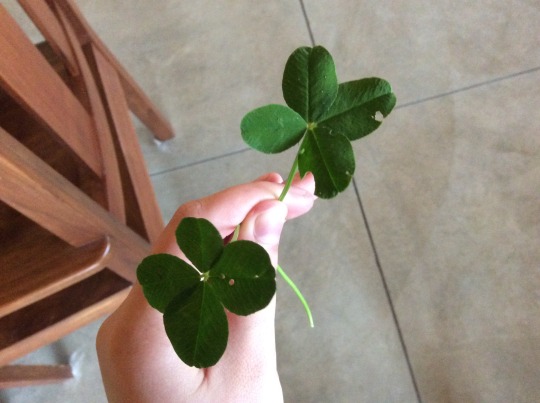Text


some cute lil duckies
18 notes
·
View notes
Text
Intro to Spirit Work

Throughout history those who practice magic have had a close connection to the spirit world, from fairy doctors who were said to learn their craft from the fae, to ceremonial magicians invoking angels and demons, to witches working with familiar spirits. To practice magic is to open yourself to this connection and to become aware of a whole new world of intelligent beings.
In modern Western culture, there’s a lot of fear around working with spirits. There are countless horror stories about malevolent hauntings, seances gone wrong, and violent possessions. It’s easy to see why many new witches are reluctant to work with spirits.
Ironically, in most other times and places, the spirit world was and is accepted as a normal part of life. All over the world, since before recorded history, people have honored their ancestors, left offerings for local land spirits, and built relationships with deities. We’re actually the weirdos for not having a healthy relationship with the spirits around us.
I personally have found working with spirits to be incredibly rewarding, and being aware of the spirits around me adds a lot of depth to my spiritual practice and my witchcraft. As long as you do your research, keep your wits about you, and are polite, you have nothing to fear and everything to gain from working with spirits.
Some Philosophy Terms
Animism: defined by Merriam-Webster as “attribution of conscious life to objects in and phenomena of nature or to inanimate objects.” An animist believes that all things have a spirit, from animals and plants to rocks and even man-made objects. Animism is a big part of many magical practices, especially in folk magic. It’s also a part of several modern religions, including Shinto and Anito. I personally am an animist, and my magic includes connecting with the spirits of the plants, crystals, and objects I work with.
Pantheism: defined by Merriam-Webster as “a doctrine that equates God with the forces and laws of the universe.” A pantheist believes that the physical world is the Divine. Whereas an animist believes that all things have their own spirit, a pantheist believes that the entire world shares a single, divine spirit. Many Wiccans are pantheists, and in some cases pantheism can coexist with animism (all things are both individual spirits and part of the divine whole).
Panentheism: defined by Merriam-Webster as “the doctrine that God includes the world as a part though not the whole of his being.” A panentheist believes that the world is a part of the divine, but that there is also a part of the divine that exists beyond the physical world. Some Christian groups are panentheists. Another example of panentheism is ancient Egyptian religion, where natural objects like the sky and the sun were seen as the bodies (but not the souls) of the gods.
Which of these philosophies you resonate with will shape how you interact with spirits and the spirit world.

Types of Spirits
This is not by any means an exhaustive list, but here are some of the types of spirits witches commonly encounter or work with:
Ancestors: deceased human spirits, especially those with a familial link to you. Ancestor veneration is a huge part of some magic systems, as well as many religions. Some witches ask their ancestors for help in every single spell or ritual, while others honor their ancestors on certain days, like on Samhain or on a deceased loved one’s birthday. Honoring the ancestors is a good place to start with spirit work because they already have a connection to you and are more likely to be willing to help you. However, working with ancestors can be difficult if you don’t know your family’s history or if you don’t feel close to your family. As author Aaron Oberon says, “Sometimes ancestor work is undoing the blocks our ancestors have built.”
To begin connecting with your ancestors, start by researching your family history. Ask your living relatives about their parents and grandparents. Try your hand at genealogy research and see how far back you can trace your family. If you feel called to do so, you can create a special altar to honor your ancestors. Light candles and leave out offerings of food that your ancestors enjoyed while they were alive.
Land Spirits: spirits that embody and are connected to a natural object or landmark. There are many, many types of land spirits, from individual tree and plant spirits to the spirits of great mountains and rivers. Some land spirits are even worshiped as gods – like Hapi, the Egyptian god of the Nile. Some modern witches even choose to recognize cryptids like Mothman or the Jersey Devil as land spirits! Working with your local land spirits can help you develop a deeper connection to your environment and can make your magic feel more localized and personal.
To begin connecting with land spirits, start by learning about the biology and folklore of your local area. Offerings for land spirits are usually left outside, so be sure to offer things that won’t harm local wildlife. Wild bird seed, fresh fruit, and unsalted peanuts are a few examples of safe offerings.
Spirits of Place: spirits tied to a specific building or location. Unlike land spirits, these beings aren’t always connected to a natural feature. Houses and other buildings can have their own spirits that embody the energy of that place. In Germanic folklore, these spirits are called house wights or husvaettir, and in English folklore they’re called brownies. For people who grew up in non-animist cultures, it can feel strange to leave offerings for the spirit of a man-made building, but there’s a long history of these types of spirits being honored all over the world. I personally see house wights as being similar to land spirits.
If you want to begin connecting with the spirits of your home, start by greeting them by name and leaving out an offering for them. Establishing a relationship with the spirits of your living space can help you create a more harmonious and productive home. Traditional offerings for house wights include dishes of cream, grain-based porridge (like oatmeal or grits), and clean water.
Animal Spirits: the spirit of a specific animal, the archetypal Spirit (with a capital “S”) of an entire species of animal, or an individual spirit that appears as an animal. The concept of animal spirits that act as protectors and guides is found in many cultures, especially those with shamanic traditions. In Norse mythology, fylgjur were protector spirits who often appeared as animals. In British Traditional Witchcraft, witches work with familiar spirits that often take on animal forms. It’s worth noting that the terms “spirit animal” and “totem animal” come from Native American spiritual traditions and should not be used by people who don’t belong to those cultures. The concept of animal guides exists in other cultures, so there’s no reason to appropriate indigenous words and ideas. In my experience, animal spirits are often friendly and easy to connect with, so this is a good place to start for witches who are new to spirit work.
If you’d like to work with animal spirits, you can begin by connecting to the animals that are local to your area. You may feel called to bring a part of the animal you’re connecting with into your sacred space – for example, I keep crow feathers on my altar. Offerings depend on the type of animal spirit you’re connecting to – some require only fresh water, while some traditions state that familiars should be fed with blood (not human). Use your intuition to choose what works for you.
Fairies: fairies are a specific kind of land spirit, and most fairy lore is based on mythology and folklore from the British Isles. Fairies have a reputation in modern pop culture as being sweet, friendly creatures – some authors even compare them to angels! However, I think it’s important to remember that historically, fairies were known for being mischievous and sometimes dangerous. In folklore, fairies are less Tinkerbell and more Spiderwick Chronicles. As author Morgan Daimler says, “They can be cruel and vicious, or generous and kind. Some of them are helpful. Some are indifferent. And some of them think we make a very tasty meal indeed.” For this reason, fairies should be approached with caution.
If you want to honor the fairies in your practice, I recommend checking out Morgan Daimler’s books – they have several on this subject that are both easy to read and well-researched. There are a lot of rules for working with fairies, such as not telling them your full name and not saying “thank you” to a fairy, so this is one type of spirit that you should definitely research before beginning to work with them.
Angels: divine messengers; spirits of love and light that come from the Divine and have no physical form. Strictly speaking, “angel” refers to a messenger of the Abrahamic God, but there are other spirits from other religious traditions that fill a similar role. Angels and similar spirits embody divine love, and as such they are both incredibly powerful and incredibly supportive. Because of their loving nature, working with angels is a good place to start spirit work. Some witches who have had negative experiences with Christianity, Judaism, or Islam may feel uncomfortable working with angels. I have personally found that angels don’t really care how you identify in terms of religion, and have had good experiences with Christian angels even though I identify as pagan. However, your experiences may be different, so please don’t do anything that makes you uncomfortable!
There are a lot of bad resources floating around the Internet when it comes to angels. If you’re interested in working with them, I recommend Chantel Lysette’s books Azrael Loves Chocolate and The Angel Code. There’s also a YouTube channel called Ask Angels with Melanie Beckler – I don’t agree with 100% of her ideas, but it’s a decent free resource. Offerings to angels are typically non-physical, like the light from a candle or the smoke from incense.
Demons: spirits of mischief, strife, and/or evil with no physical form. In Western culture, we associate the word “demon” with Christianity, but demons appear in many other religions, including Hinduism and Kemetic paganism. I personally define “demon” as a spirit who: 1.) is not and never was human, and 2.) is antagonistic towards humans. Most witches only deal with demons when they’re trying to get rid of one. However, there are some magic traditions, such as Goetic Magic, that call on demons in magical rituals. Let me just say this: in my experience, there are very few reasons why someone would want to work with a demon, and doing so is as dangerous for the person doing the summoning as it is for the intended victim. I definitely recommend that new witches stay away from these spirits. (But it should be noted that demons are not the same thing as dark deities!)
If you need to get rid of a demon, sulfur is used in American traditions to banish them. (It may also banish helpful spirits, so keep that in mind.) Blessed water is used to repel demons in several cultures. You can also call on an angel or deity for protection.
Deities: powerful, divine spirits who are worshiped as gods. Deities vary a lot from culture to culture, and each deity has their own personality, moral code, and mannerisms. I have found working with deities to be very fulfilling, as deities allow us to put a human face on the Divine. It’s much easier to form a relationship with, say, Odin than it is with an abstract divine force, at least in my experience. Aside from spiritually fulfilling relationships, deities can also be powerful allies in magic. It’s worth noting that very few deities are 100% good or 100% bad – they’re more nuanced than that. Just like anyone else, deities have strengths and weaknesses. (Yes, even the Abrahamic God. Read the Old Testament sometime and tell me God doesn’t have flaws.)
If you are interested in working with deities, start by doing research into the pantheons you feel drawn to. Were you obsessed with Greek mythology as a kid? (Or Norse? Or Egyptian? Or any other culture?) Read up on it! Find out how those deities were worshiped historically, and use that as a starting point for building your own practice. Offerings for deities vary from culture to culture, but I’ve found that fresh, clean water seems to be pretty much universally accepted.
This post ended up just being a whole lot of vocab, but I wanted to get some definitions straight before I start writing about how to connect with the spirit world. In my next post, I’ll talk about how to introduce yourself to different types of spirits and etiquette for maintaining a healthy relationship!
Resources:
Southern Cunning: Folkloric Witchcraft in the American South by Aaron Oberon
A Practical Heathen’s Guide to Asatru by Patricia M. Lafayllve
Where the Hawthorn Grows by Morgan Daimler
Wicca: A Guide for the Solitary Practitioner by Scott Cunningham
Temple of the Cosmos by Jeremy Naydler
Azrael Loves Chocolate, Michael’s A Jock: An Insider’s Guide to What Your Angels Are Really Like by Chantel Lysette
6K notes
·
View notes
Photo

“We Are Safe”
Protection sigil for a group of people.
Can be used on a room to protect people inside.
Can be used on yourself and your coven members
Or if you’re apart of some other group and wish to protect it’s members.
Can also be used on a picture of a group of people (as long as you are also in the picture).
6K notes
·
View notes
Text

BEST WITCHY BOOKS FOR THE BEGINNER WITCH
Buckland’s Complete Book Of Witchcraft - This book is a most have in every Wiccan’s (If you are) collection because of how informative it is. I highly recommend this book to really every witch who hasn’t read it yet.
The Modern Guide to Witchcraft: Your Complete Guide to Witches, Covens, and Spells - This book is a nice add to a baby witches collection, for how simple of a read it is. Not to mention how aesthetically pleasing it is.
Wicca: A Guide for the Solitary Practitioner - This book is also a very nice read, it has a perfect amount of information where you wont get information overload too quickly. Its unbiased and offers a great first start to starting the craft.
Wicca: by Harmony Nice - If you are a complete newbie to Wicca or the craft, then this is the book for you. This book is easy to swallow, and offers easy to understand information for newbies without being too difficult to process.
Of Witchcraft and whimsy - I think this is the book for newbies who want to seek the more modern practices of witchcraft. This is a book that focuses more on the craft than Wicca itself. It is also complete with plenty of unique and fun spells perfect for beginner level.
Pastel Spells - A perfect book for newbies looking to try out spells of all types at a beginner level.
The Green Witch - Perfect for a beginning green witch, this book is complete with all the basics of Green magick complete with the correspondences of herbs and food, recipes, and basic practices and morals of a green witch.
Spellcrafting: Strengthen the Power of Your Craft by Creating and Casting Your Own Unique Spells - Perfect for a new witch looking to formulate their own unique spells.
The Modern Herbal Dispensatory: A Medicine-Making Guide - Perfect for new witches looking to expand their knowledge on herbalism.
The Modern Witchcraft Guide to Magickal Herbs: Your Complete Guide to the Hidden Powers of Herbs - Beautifully illustrated guide to herbs and their magickal properties.
The Witch’s Herbal Apothecary:Rituals & Recipes for a Year of Earth Magick and Sacred Medicine Making - Perfect for the beginning witch interested in herbalism, ands its all around a pretty little book.
I love you all! My DMs, mail, and comments are always open!
xoxo, Angel
20K notes
·
View notes
Text
💎Some Crystals and their meaning in Witchcraft💎

Recently I am a huge - like really huge - fan of crystals. That’s why I thought that I will try to write a detailed list about crystals and what they are good for. I hope this little list may be useful for others too.
Anxiety: amazonite, amber, agate, emerald, herkimer quartz, jasper, lepidolite, lodestone, obsidian, quartz, rose quartz, sodalite, turquoise
Balancing/Stability: amethyst, desert rose, jasper, pearl, quartz, red jasper, sodalite, turquoise
Banish fear: banded agate, bloodstone, sodalite
Banish negative energy: amethyst, black onyx, black tourmaline, danburite, lepidolite, malachite, onyx, quartz, smokey quartz, tourmaline
Calming: amatonite, herkimer quartz, howlite
Clarity: azurite, citrine, fluorite, hematite, magnetite, obsidian, pietersite, quartz sapphire, smoky quartz
Cleansing: amber, obsidian
Courage: carnelian, hermatite, turquoise
Creativity: amazonite, ametrine, apatite, aventurine, carnelian, celestite, chalcedony, citrine, flourite (blue), lolite, jasper, kunzite, opal, sunstone, tiger’s eye, lapiz lazuli
Divination: bloodstone, obsidian, turquoise
Empathy: aquamarine, blue aventurine, chrome diopside, rose quartz, malachite
Faith: emerald, imperial golden topaz, labradorite, onyx, sodalite, variscite
Friendship: ruby fuchsite, rhodonite, turquoise
Forgivness: rhodonite, rose quartz
Happiness: amazonite, amber, citrine, red goldstone
Harmony: moonstone, rose quartz, sodalite
Healing: amber, angelite, jasper, kyanite, malachite, quartz, rose quartz, turquoise
Help in focuse: banded agate, citrine, lodestone
Hope: blue aventurine
Indivituality: malachite
Inspiration: amazonite,amethyst, ametrine, blue chalgebony, blue goldstone, carnelian, citrine, garnet, orange calcite, quartz
Joy: amazonite, citrine, labradorite
Love: angelite, citrine, desert rose, dragon blood jasper, garnet, jade, opal, quartz, rose quartz, ruby, turquoise
Loyalty: dalmatian stone, turquoise
Luck: amazonite, amber, apache tears, aventurine, sapphire, turquoise
Meditation: emerald, herkimer quartz, quartz, sodalite, turquoise
Mind: pyrite, sodalite
Passion: carnelian, garnet, ruby
Peace: amazonite, amethyst, emerald, larimar, lepidolite, rose quartz, selenite, sodalite
Positive energy: amber, apache tears, calicite, citrine
Protection: amethyst, black tourmaline, hag stone, kunzite, obsidian, smoky quartz, tiger’s eye, tourmaline, turquoise
Prosperity: amazonite, aventurine, citrine, jade, moss gate, pyrite, ruby , tiger’s eye
Psyche: black tourmaline, calcite, emerald, labradorite, tuquoise
Psychic: chalcedony, unakite
Relieve stress: blue calcite, herkimer quartz, lepidolite, quartz, sodalite
Self-confidence/Self-esteem: amazonite, amber, ametrine, black tourmaline, chrysocolla, garnet, larimar, pearl, prehnite, rhodonie, rose quartz
Serenity: emerald, lepidolite
Sleep: amethyst, emerald, howlite, ledestone, sodalite
Strenght: amber, hermatite, red jasper
Success: amazonite, pyrite
Tranquility: emerald, lepidolite
Trust: onyx, ruby fuchsite, sodalite, turquoise, variscite
Vitality: carnelian, garnet, orange calcite, red agate, ruby, ruby zoisite, sunstone,
Wisdom: tiger’s eye, sodalite
Wealth: aventurine, citrine, green calcite, jade,malachite, pyrite, tiger’s eye, tree agate
In the future I’ll expand the list when I find enough new and useful information. I hope this little post will help someone. 😊

19K notes
·
View notes
Video
“Fierce predator establishing dominance in her new territory”
(via)
30K notes
·
View notes















